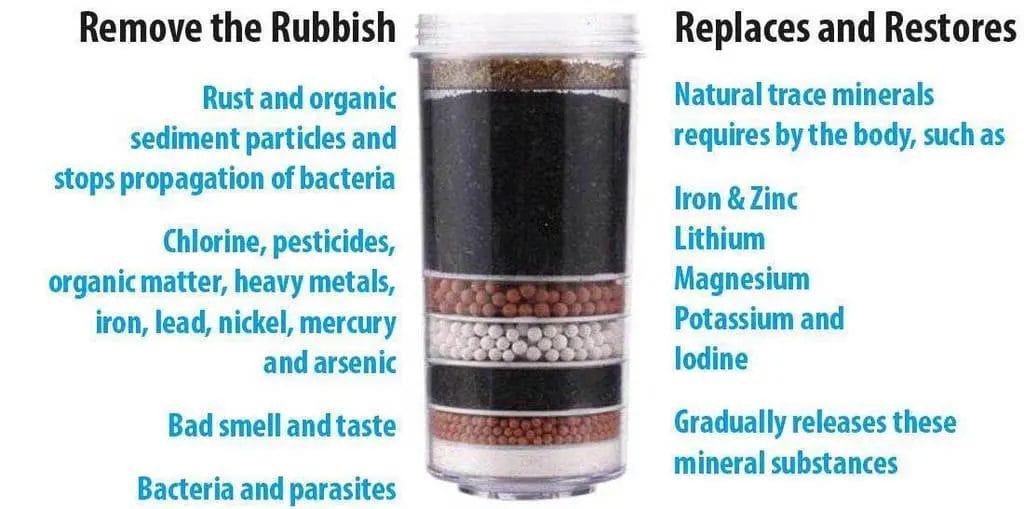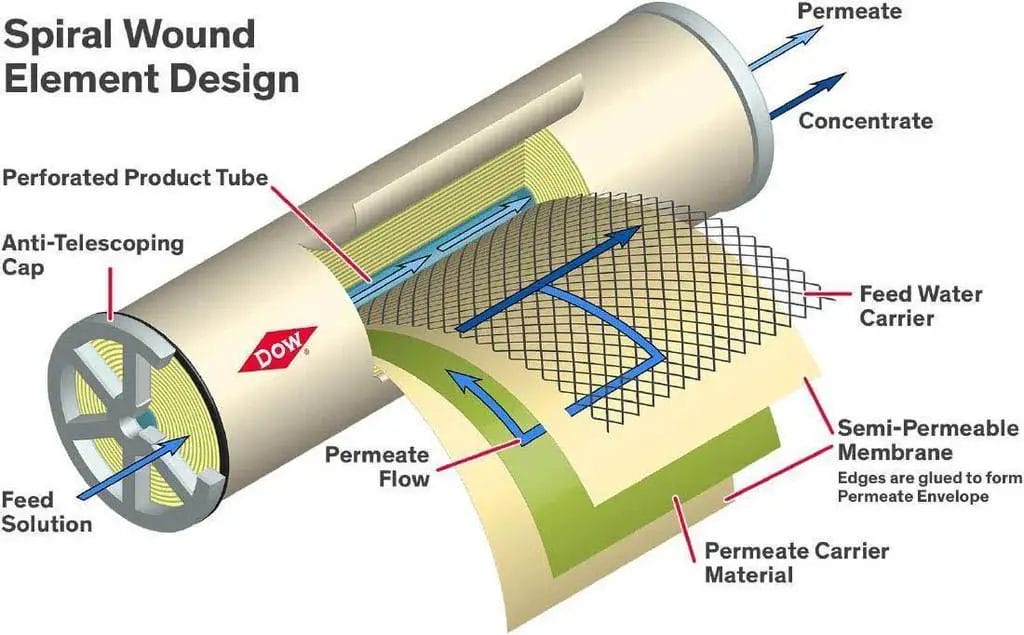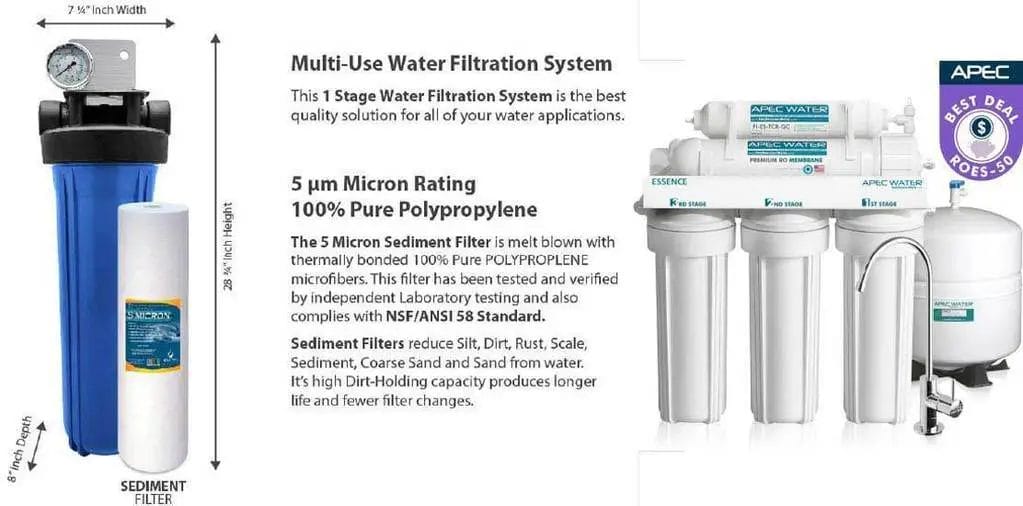We can live a few days without foods because our body will spend the stored food inside it. Water is a must for our survival. About two third of our body is made of water. But it is a great regret that pure, fresh and clean drinking water is very tough to get.
There are some causes behind this likely environmental degradation, growing population, and industrial development.
Water is equal to life. Every day we need 2.4 liters of pure drinking water to live well. Therefore, one must be conscious of the water purification system and the available water purifiers on the market.
There are lots of minerals found in natural water. The exact amount of these elements is beneficial for health, but an excess amount of them causes many diseases. For life, there is no alternative to clean water.
Therefore, a water purifier is a very important thing for our homes. The task of a water purifier is to remove excess salt and microbes, suspended particles.
Moreover, it can retain necessary minerals and vitamins. There are many manufacturers in the present days who claim that they ensure pure water.
But the reality is that it is very tough to know which one is good. It is very difficult to get a purifier that meets the standard of the users.
Both water purifier and water filter work on the similar mechanical principles. At first, they suck up raw materials from water.
Then it filters out pollutants ranging from sediments to micro-organisms. At last dispense clean water. There are some differences between the two. Filters fail to remove bacteria and viruses from water, but a purifier can remove them.
Some purifiers use an electrostatic charge to capture or kill bacteria. Others like to use chemicals for this purpose.
Pure water is a must in everywhere. In pharmacy, labs and even for drinking purposes, there is no other alternative to pure water. It is a very common solvent.
It may be sourced from anywhere on the ground. This property is responsible for all types of pollution.
- Particulates: One can remove debris and silt from water by passing it through a 10-20 micron filter.
- Microorganisms: Bacterial agents are sometimes difficult to remove by water distillation systems. Their size, growth rate, and robustness demand a competent design. Bacteria are deliberated in unit per milliliter in the colony. Disinfectants can destroy or kill them. So their cellular fragments and secretions should be eliminated to give up contamination.
- Endotoxins, pyrogens, DNA and RNA: These are bacterial by product or Cellular fragments. Dangerous for tissue cultures. Possible to detect by a Limulus Amoebocyte Lysate (ALA) test.
- Dissolved inorganic elements: Dissolved Inorganic elements are nitrates, phosphates, magnesium and calcium, silicates, carbon dioxide, fluoride, chlorine and other human-made or natural chemicals happening from the environment. Electrical conductivity is applied to observe high deliberation of ions. At the same time, resistivity is exercised to detections if found in little concentrations. These pollutants influence water hardness, acidity, and alkalinity.
- Dissolved organic elements: These elements are plants and animals, pesticides remain or fragments. TOC analyzers are applied to measure CO2 given off by organics subjected to deterioration. Organic free water is used only in functions where an investigation of the organic substance is carried out.
- Scientific applications need removing certain kinds of pollutants. On the other way, pharmaceutical productions need near-total taken away of impurities.
How Does A Water Purifier Work
Activated Carbon in water purifiers
Activated carbon has a long history to use in water purifier for a long time. This is perhaps most powerful absorbent for men to remove impurities.

One pound of carbon can remove thousands of particles from the water. It has an electropositive charge that invites chemicals and pesticides found in water.
Activated carbon removes bad smell odor from water. This is very wise to use an activated water filter to disinfect water for drinking water.
Activated carbon is a very absorbent material. It holds and attracts harmful chemicals of the water surface by a system recognized as adsorption.
Charcoal beds purifiers were discovered in India and ancient Egyptian civilization by archaeologists for purifying water.
The activated carbon is the similar type of charcoals used then. Now it is activated by much temperature steam treatment.
Ozonation
The important section of chemical-free disinfection is ozonation. It depends on oxygen that ensures our drinking water is free from any probable microbiological pollution.
The ozonation system invites basic molecular oxygen (O2) and passes it through a special chamber. Here it exposes a high voltage electrical charge.
Electricity splits here oxygen molecules and recombines in a higher energy form named as ozone (O3). Finally, ozone circulated continuously through the purified water.
Drink as much as ozone in this process at various steps. We have introduced ozone at the very beginning of the Reverse Osmosis unit.
The aim is to keep the even single part of our system. It is hundred percent bacteria free and sanitary. We use more of that technology than other competitors.
More Ozonation
We are speaking briefly about the usefulness of ozone sanitization. Ozone is capable of oxidizing a wide range of pollutants. It is a potent disinfectant.
Moreover, ozone is very effective against different types of organisms and impurities like cryptosporidium.
This is really impermeable to chlorination. How powerful is ozone? It is more than 1500 times effective than chlorine as an oxidant.
Ozone is very useful in our practical life for destroying cryptosporidium. Many tests have gone through in usual concentration levels. Ozone can destroy 99.99% of Cryptosporidium oocysts per five minutes.
Chlorine has no effect on cryptosporidium oocyst viability at a concentration of 30,000 parts/ million over the period of 8 hours. The typical concentration of chlorine is around 3 parts/ million imagine what 30,000 parts/ million would taste like.
Ozone isn’t a fixed state of oxygen. Ozone goes back to its usual O2 state after a few minutes. The state of the art disinfection method is problem free, though it is very powerful. This depends on nothing but all natural oxygen, not any strange chemicals or additives.
Therefore where do all ozonation take place? It is in our final product’s storage tanks.
Gravity Based Water Purifier
These purifiers do not use electricity rather than it uses activated carbon or UF. It is based on the natural force of gravity as the name indicates. Here water passes from a higher point to a lower point naturally.

They use microfiber mesh that removes visible dirt and other particles in water. Gravity based purifiers are common in chemical based filters.
Some like to use ceramic cartridges and other use UF filters. Really gravity based water is better than boiled water or safer than chemically treated water.
It works on the idea of something is better than nothing. This gravity based water purification system is very popular for municipally supplied water.
Membranes in water purifiers
One of the best methods of purifying drinking water is using a membrane. There is a membrane in a coconut tree under the groundwater, which sends purified water. It also adds nutrients to the water.

Today we are using the membrane system that is same as the roots of the coconut tree. Naturally, we use a very thin sheet of plastic materials to make synthetic membrane. There are very fine pores or holes in the membrane.
You will get many types of membranes on the market. They are classified according to their pore size. Nano-filtration membranes NF, Micro-filtration membranes MF and Reverse Osmosis are the famous brands in the market.
Comparatively the pore size of the RO membrane is smaller than the others. So it has a great capacity to filter out mixed chemicals from water. In this special feature, it can convert salt water to fresh water.
Home water purifiers with RO
Reverse Osmosis is a purification system that applies semi permeable membrane to fragment big ions and particles from water.
The system can remove suspended and dissolved species from the water like bacteria. It is widely used in the production of potable water and industrial process.
In RO system, one will get pure water from the solute for using pressure. As a result, pure solvent passes on the other side. The membrane may not allow big ions or molecules through the holes.
Alkaline/Water Ionizers
The filters here use a method popularly known as electrolysis. Here water passes over a plate that is electrically charged. It separates into 2 streams. One stream is alkaline and other steam is acidic.
We will get not only soft water but also low acidity in water that is very much useful for your skin.
UV Filters
UV is the newest technologies used for purifying water. The rays can damage harmful bacteria from water that is damaging our health.
You are trying to get an environmentally friendly water purifier. UV filters are the best solution for your problem.
Multi-Stage Water Purifiers or Universal Water Purifiers
The Universal water purifiers use the combination of various purifying technologies. Some manufacturers use the power of two or three purification systems in various steps to purify water. Here there are some techniques to make water clean from all types of impurities and germs.

RO+ UV is the very lucrative combination technology to clean water. The company uses combination technology to ensure purified water.
The Reverse Osmosis and Ultraviolet technology work greatly to remove germs, viruses, dissolve impurities and heavy metals from water.
The combinations of RO+ UV + UF have super ability to purify water. This purifier can remove germs, bacteria, heavy metals and dissolved pollutants from water.
Some companies like to use UV rays to be sure that the water is pure and safe. Some companies prefer to apply smart tools to purify water.
Besides, some like to apply a combination of purification technologies to make water clean. So there is no need to think more about purification methods. The problem is that these methods are very costly and need high maintenance.
When TDS level of water is more, it is suggested to use these purifiers. Then you will find clean water for your daily need.
Sometimes people use pre-post activated carbon to make water free from organic chemicals. The activated carbon develops the life of RO membrane by overcrowding impurities that may stick to RO membrane. These impurities may reduce the lifespan of the membrane.
Water Filtration Process
How does a water purifier work? Water is a solvent, therefore, it can dissolve other substance easily. Suppose you can get ad detergents with water to wash your clothes.
Sometimes it leads you to a bigger problem with your drinking water. This may happen when you make a long journey outside your home.

At first, water collects from the natural source flowing through the ground. Then it sends to the treatment center. After treating it well, finally, it sends to your home. Through this long process, water can absorb chemicals, dirt, and other contaminants. They can make the water cloudy, and sometimes it seems bad tasted and undesired odor.
The process of filtration system makes contaminant water into clean water. This water will be free from sediment, tastes, odor, and pollutants.
The whole process does its function into 2 ways; they are physical filtration and chemical filtration. In physical filtration, water is strained through a gauze-like membrane to eliminate all particles. But in chemical filtration, water is treated by applying patented smart technology to take out impurities.
Cleaner Water, Everywhere
Different brands of filtration system use different ways to remove impurities from water. There is no exact way to remove problem causing impurities in water. People use Culligan’s water purification and filtration system to get clean drinking water.
Water quality depends on many factors like the place where water is supplied, the place where your life and so on.
Your local Culligan Man aids you to select the best water filtration to treat odor, feel, look and quality of water coming from the faucet.
If you face any problem, call them, and they will find the solution. Finally, you will get pure, fresh, clean drinking water.
how does water purifier works?
Frequently Asked Questions:
Can I drink water directly from a water purifier?
Yes, you can drink water directly from a water purifier. The water from a water purifier is free of contaminants and safe to drink. The water you receive directly from the faucet is already purified and clean but is not fit for consumption as it contains trace amounts of chlorine and other chemicals. Therefore, purifying the water from the water purifier is advisable to make it safe for drinking.
Do water purifiers remove minerals?
A water purifier removes all impurities from water, including pesticides and minerals. So it does not remove minerals from water.
What kind of water purifier is best for health?
UV water purifiers are the best for pure and healthy water. They remove particles, chemicals, odors, and allergens from the water and provide quality water for drinking. So these water purifiers are the best ones for your health.
What happens when filtered water is boiled?
When water is boiled, naturally occurring minerals and elements present in it, such as sodium and fluoride, are vaporized and not removed from the water. However, in recent studies conducted by the U.S. Geological Survey, it has been found that the concentration of most of the naturally occurring elements in the water is usually very low.
Is boiled water healthier than tap water?
Boiling water will make it sterile but will not remove harmful substances such as chlorine, heavy metals such as lead, etc. Boiling water can only remove bacteria. It is good to boil water before making baby bottles, cooking food, etc., but drinking is not necessary. Tap water has been treated to the World Health Organization’s standards for safe drinking water, so it is suitable to drink even without boiling.
Conclusion:
The great thing about water purifiers is that they get rid of all types of contaminants. You can also adjust the settings according to your personal preferences with regard to smell, taste, and even the color of the water.
The only downside is their hefty price tag. But if you are looking for an efficient way to ensure clean and healthy drinking water, consider investing in one.
Sarah J. Gregory
352 Hershell Hollow Road
Anaheim, CA 92805






